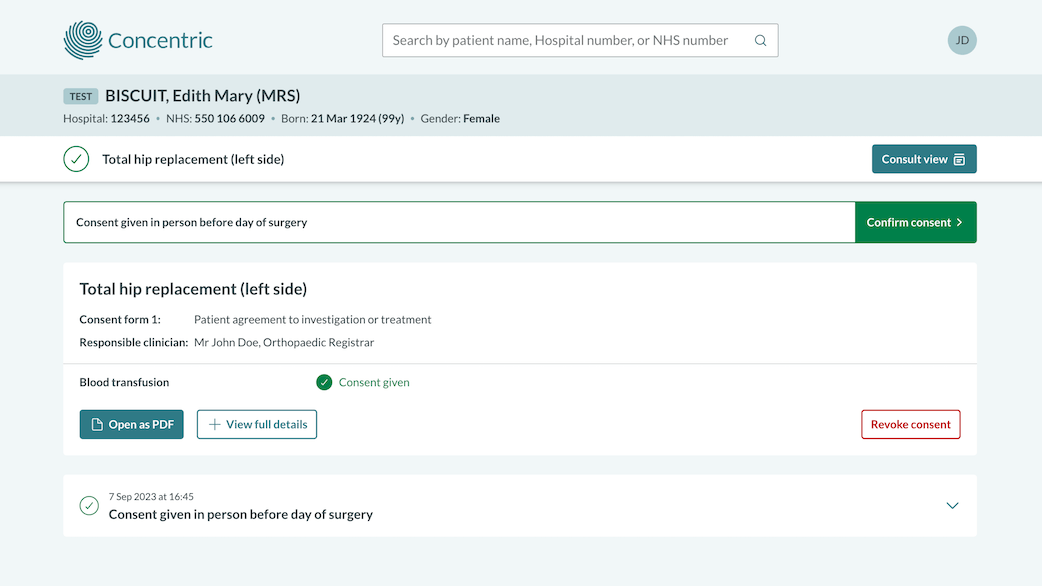Reduce your carbon footprint
In many organisations, consent is one of the last remaining paper processes. Digital transformation of a paper-based consent process reduces the organisation's carbon footprint, through reducing paper use and supporting remote pathways.
Eliminate paper use across the pathway
The consent process has traditionally involved documenting the discussion, risks and benefits, and signatures on paper, often an A3 carbon-copy consent form. In addition to being a significant amount of paper and printing, these are notorious for being lost prior to treatment, with documentation - and therefore also paper-based carbon impact - often duplicated. Whilst the carbon-copy has often been done so that a patient can be given a copy, in practice this is done only in the minority of cases.
In parallel, generic patient information leaflets have often been used to share information with a patient. These are usually in the range of 3-10 pages long. In pathways where they are used, they are often unnecessarily given to patients more than once, for example during an outpatient appointment and again as part of pre-operative assessment.
The introduction of electronic health records, without digital consent, can lead to the consent process becoming more carbon-intensive, due to the use of scanning of paper consent forms into the electronic record, and subsequent re-printing (and then re-scanning!) on the day of treatment so that the confirmation of consent process can be completed on the form.
Introducing Concentric means that almost all this paper can be removed from the consent process, by replacing the paper consent form, merging in the information previously on the patient information leaflets into the digital consent process, and seamless integration of the completed documentation into the electronic health record. A small amount of paper will still be used following implementation, as a paper print-out of the consent information will be preferred by a minority of patients, particularly those who cannot, or would need additional support, to access their information digitally.

Remote consent
Concentric allows for many different workflows, with a significant number of consent episodes completed remotely. In most cases this is following a consent conversation as an outpatient (either in person or virtually), with the patient given access to their information, and the ability to give their consent remotely when they are ready.
In some cases, the fact that consent can be completed remotely means that the patient does not need to physically attend the hospital – for example, we've seen in-person consent clinics become virtual, where appropriate, with the utilisation of remote consent documentation. With the shift to two-stage consent, as per best practice, the carbon impact of remote consent functionality increases.
Net-zero cloud hosting
Where possible, we use carbon neutral providers in our supply chain. Google Cloud Platform, which we use for our cloud hosting, is carbon neutral today, but is aiming higher: their goal is to run on carbon-free energy, 24/7, at all their data centres by 2030.

Research, and next steps
The above demonstrates that Concentric has a role in supporting healthcare organisations meet net zero targets, but there is further work to do to more accurately measure digital consent's impact on carbon footprint, and identify ways that we can deepen that impact.
Upcoming work will measure the carbon impact along the pathway, and compare this to the paper-based process, in a similar way to the health economics analysis work done.
We have led the research looking at the feasibility of introducing carbon-impact into shared decision making (SDM) conversations, and will look to progress this work, with the long-term aim of making it possible to introduce carbon-impact into clinician-patient SDM conversations, tackling the current blockers highlighted in the paper.
Why switch to digital consent?
Head back to explore the other benefits of digital consent.
